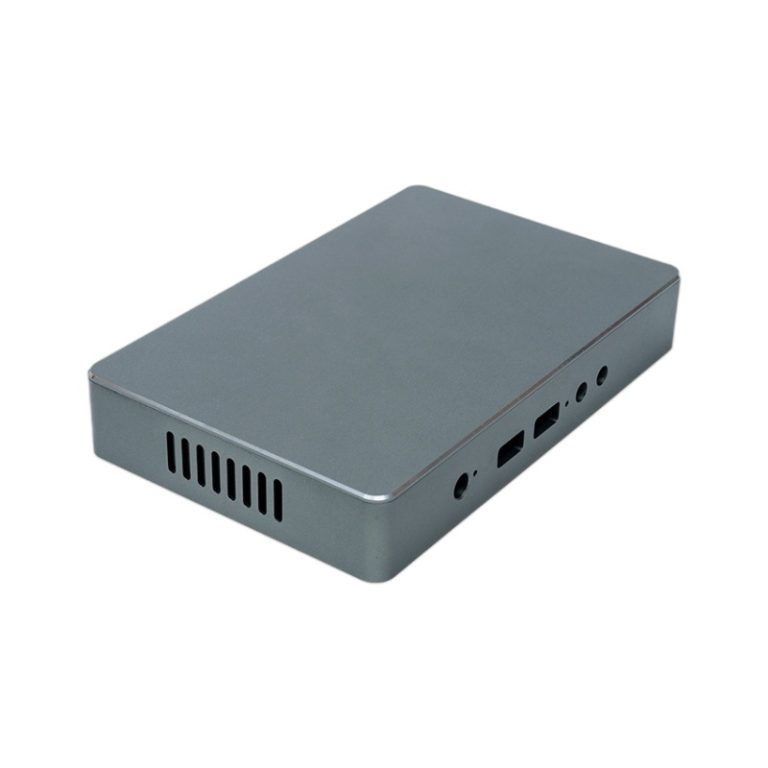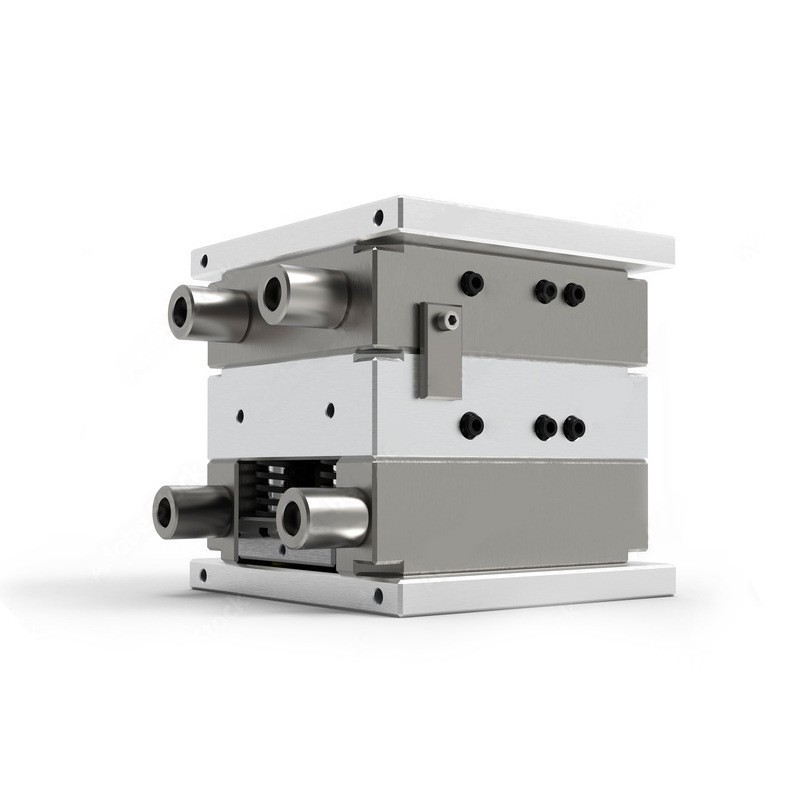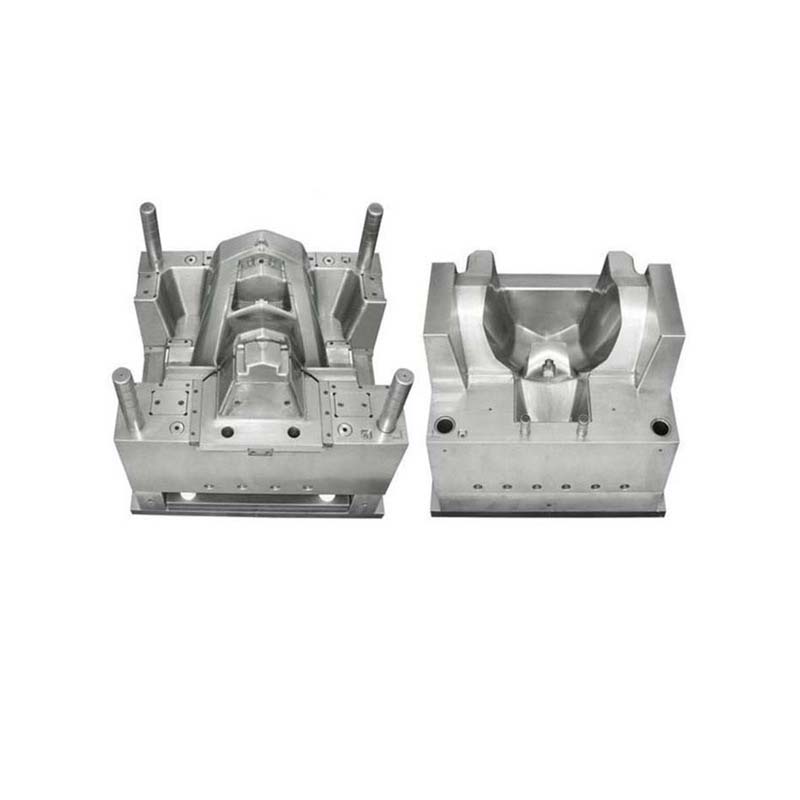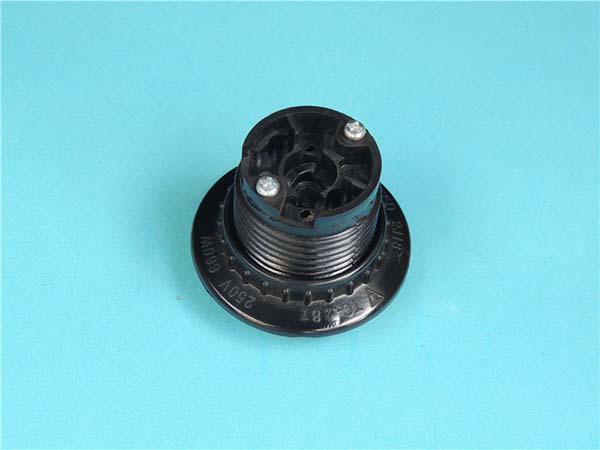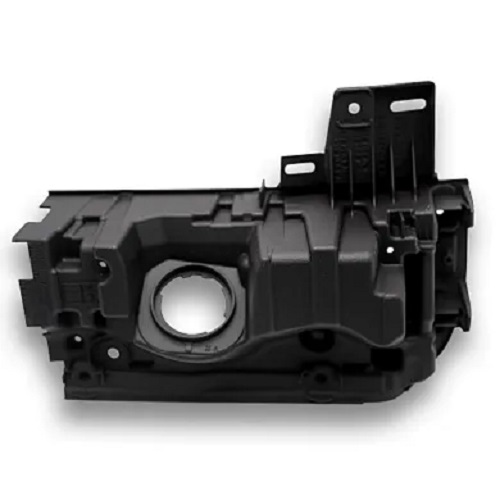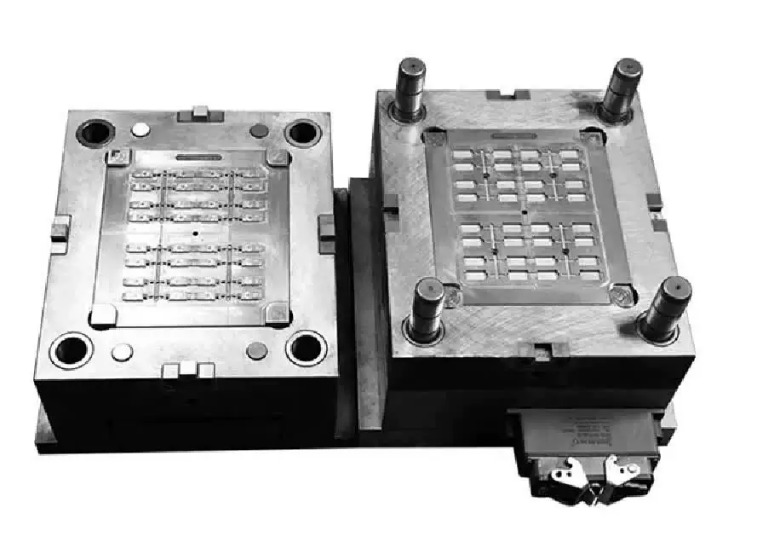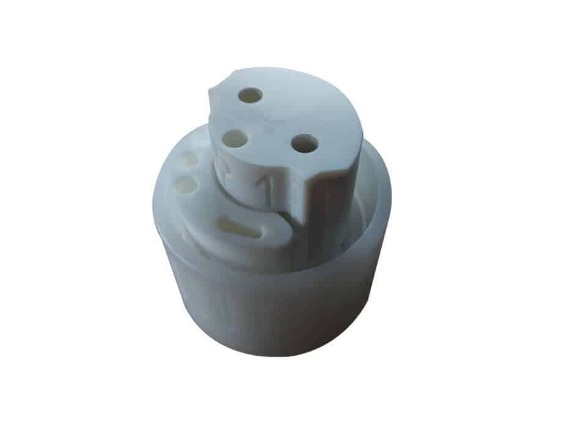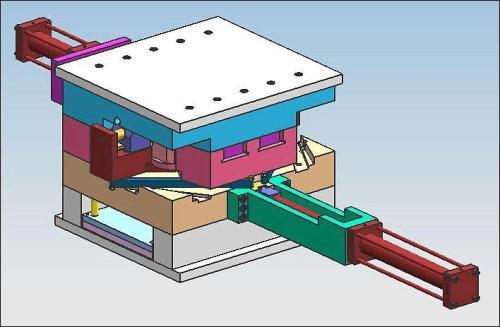Understanding Prototype Molding Services
Prototype molding services are the cornerstone of the product development journey. At its core, prototype molding is the process of creating a preliminary model or sample of a product using various molding techniques. This initial model serves as a tangible representation of a product concept, allowing innovators, entrepreneurs, and engineers to transform their abstract ideas into a physical form for further evaluation, testing, and refinement.
In the early stages of product development, when ideas are still in a nascent stage, prototype molding services play a pivotal role. They bridge the gap between the drawing board and the manufacturing floor, enabling companies to visualize, test, and optimize their designs before making significant investments in full - scale production. For instance, a startup in the consumer electronics sector might have a revolutionary idea for a new portable device. Through prototype molding, they can quickly create a mock - up of the device, test its form factor, ergonomics, and basic functionality, and make necessary adjustments based on the feedback received.
These services use a range of materials such as plastics, silicone, and even metals, depending on the requirements of the product. Each material has its own set of properties, like flexibility, durability, heat resistance, etc., which can be carefully selected to best suit the product's intended use. The choice of material is just one of the many variables that prototype molding services expertly handle, ensuring that every aspect of the prototype aligns with the product vision. This fundamental understanding of prototype molding services sets the stage for exploring how they transform ideas into real - world products, which we will delve into in the following sections.
The Process Unveiled
Design Concept Input
The journey of transforming an idea into a prototype begins with the client presenting a preliminary design concept. This could be in the form of rough sketches, detailed CAD (Computer - Aided Design) files, or even just a verbal description of the product's functionality, shape, and intended use. Our prototype molding service team then engages in in - depth communication with the client.
Yigu Technology ask a series of probing questions to unearth the underlying design intent. For Yigu Technology example, if it's a consumer product, we might inquire about the target user group's age, usage habits, and aesthetic preferences. If it's an industrial component, we focus on factors like the operating environment (such as temperature, humidity, and vibration levels), compatibility with other parts, and performance requirements. By understanding these nuances, we can ensure that the subsequent steps in the prototype - making process align with the client's vision. This collaborative approach not only helps in getting a clear picture of what the client wants but also allows us to offer valuable insights based on our industry experience, such as suggesting design modifications to enhance manufacturability or improve functionality.
Material Selection
Material selection is a critical aspect of prototype molding as it directly impacts the product's performance, appearance, and cost. Here is a comparison of some common materials used in prototype molding:
| Material Type | Key Characteristics | Ideal Application Scenarios | Cost Comparison (Relative) |
| ABS Plastic | High strength, good impact resistance, easy to machine and mold, has a smooth surface finish. | Consumer electronics (like phone casings), toys, and household appliances. | Low - Moderate |
| Polycarbonate (PC) | Exceptionally high impact strength, excellent heat resistance, and good optical properties. | Automotive parts (such as headlight lenses), safety equipment, and electronic enclosures for high - heat - generating devices. | Moderate - High |
| Aluminum | Lightweight, high strength - to - weight ratio, good thermal and electrical conductivity, corrosion - resistant. | Aerospace components, high - end consumer electronics (like laptop bodies), and automotive engine parts. | High |
| Stainless Steel | High strength, excellent corrosion resistance, heat - resistant. | Medical devices, food processing equipment, and industrial machinery parts that require durability and hygiene. | High |
For a product that requires high - strength and heat resistance, like an engine component for a small - scale engine in a hobbyist vehicle, aluminum might be a better choice over ABS plastic, despite its higher cost. On the other hand, for a simple, low - cost toy prototype, ABS plastic would be a more cost - effective option, as it meets the basic requirements of strength and appearance without the need for the more expensive materials.
Molding Techniques Employed
There are several molding techniques used in prototype production, each with its own set of advantages and limitations.
Injection Molding
- Advantages: High - precision manufacturing, capable of producing complex shapes with tight tolerances. It is suitable for high - volume production as the cost per unit decreases with the increase in production quantity. The surface finish of injection - molded parts is usually very good, and it can use a wide range of materials, including various plastics and some metals.
- Disadvantages: High initial investment in mold manufacturing. The mold design and production process can be time - consuming, typically taking several weeks. It is not very cost - effective for small - scale production or when rapid design changes are required.
- Example: A company planning to mass - produce plastic smartphone cases would likely choose injection molding. Once the mold is created, thousands or even millions of cases can be produced with consistent quality and dimensions.
3D Printing (Additive Manufacturing)
- Advantages: Extremely fast prototyping, as it can directly convert a digital design file into a physical object in a relatively short time, sometimes within a few hours. It offers high design flexibility, allowing for the creation of complex geometries that are difficult or impossible to achieve with traditional molding methods. There is no need for a costly mold, making it ideal for small - batch production or when design iterations are frequent.
- Disadvantages: The materials available for 3D printing are more limited compared to injection molding. The surface finish may not be as smooth as injection - molded parts, and the mechanical properties of 3D - printed parts may be different from those made by traditional methods. For large - scale production, the cost per unit can be relatively high.
- Example: A startup developing a new, innovative prosthetic limb design might use 3D printing to quickly create multiple prototypes for testing and refinement. The ability to make rapid design changes based on user feedback is crucial in this early stage of product development.
When choosing a molding technique, factors such as the complexity of the design, the required production volume, the time available for prototype development, and the budget all come into play. A product with a simple design and a large production volume requirement would likely benefit from injection molding, while a complex, one - off design or a product in the early design - testing phase would be better suited for 3D printing.
Real - World Success Stories
Case 1: The Medical Device Innovation
A medical technology startup was developing a revolutionary minimally - invasive surgical tool. The concept aimed to reduce the invasiveness of certain surgical procedures, leading to faster patient recovery times. However, they faced numerous challenges during the prototype development phase.
Challenges:
- Complex Design Requirements: The tool needed to have a very precise and intricate shape to reach the targeted areas in the body accurately. It also had to be lightweight yet extremely durable to withstand the rigors of surgical procedures.
- Material Constraints: Given that it was a medical device, the material had to be biocompatible, meaning it wouldn't cause any adverse reactions in the human body. Additionally, it needed to have high corrosion resistance to maintain its integrity during sterilization processes.
Solutions:
- Our prototype molding service team worked closely with the startup's R & D team. We used advanced CAD/CAM (Computer - Aided Design/Computer - Aided Manufacturing) technology to create a highly detailed 3D model of the surgical tool. This allowed us to visualize and optimize the design before moving to the physical prototype stage.
- For material selection, after extensive research and testing, we recommended a special grade of medical - grade titanium alloy. This material met all the biocompatibility and durability requirements. We also used precision injection molding techniques to ensure that the complex shape of the tool was accurately replicated.
Final Results:
The prototype was successfully created, and it passed all the initial laboratory and pre - clinical tests. The startup was able to raise significant investment based on the successful prototype. The final product, which was based on the refined prototype, was launched in the market and has been well - received by the medical community. It has now become a standard tool in many hospitals for the targeted surgical procedures, improving patient outcomes and reducing healthcare costs associated with longer recovery times.
Case 2: The Consumer Electronics Breakthrough
A well - known consumer electronics company wanted to launch a new, ultra - portable wireless speaker. They aimed to create a product that stood out in a highly competitive market.
Challenges:
- Compact Design with High - Performance Requirements: The speaker needed to be small enough to fit in a user's pocket but still deliver high - quality sound. This meant finding a way to optimize the internal components and the enclosure design to achieve the best possible sound quality within a limited space.
- Aesthetic Appeal: In the consumer electronics market, appearance matters as much as functionality. The company wanted a sleek, modern design that would appeal to a wide range of consumers, from young tech - enthusiasts to professionals.
Solutions:
- We employed a combination of 3D printing and injection molding. First, we used 3D printing to quickly create multiple design iterations of the speaker enclosure. This allowed the company to test different shapes and sizes for both the acoustic performance and the aesthetic appeal. Once the design was finalized, we transitioned to injection molding for high - quality, mass - production - ready prototypes.
- For the internal components, we worked with the company's engineers to develop a custom - designed speaker driver that was specifically optimized for the compact enclosure. We also used advanced materials for the enclosure, such as a high - strength yet lightweight polycarbonate blend, which not only provided the necessary protection for the internal components but also contributed to the sleek appearance.
Final Results:
The product was launched to great acclaim. It quickly became one of the best - selling portable wireless speakers in the market. The success of the product can be attributed in large part to the effective use of prototype molding services, which allowed the company to refine the design, optimize the performance, and create a product that met the demands of the consumers both in terms of functionality and aesthetics.
Frequently Asked Questions
What is the typical turnaround time for prototype molding?
The typical turnaround time for prototype molding can vary widely depending on several factors. For relatively simple designs with standard materials and using 3D printing as the molding technique, it can take as little as 1 - 3 days. This is because 3D printing can quickly build the prototype layer by layer directly from the digital file. However, if the project involves injection molding, which requires mold design and fabrication first, the process can be much longer. The mold - making process alone can take 2 - 4 weeks, and then the actual prototype production may take another few days to a week, depending on the complexity and the number of parts needed. Additionally, factors like the availability of materials, the workload of the service provider, and any unforeseen design changes during the process can also impact the overall turnaround time.
How do I choose the right material for my prototype?
When choosing the right material for your prototype, consider the following key factors. First, think about the product's intended use. If it's a product that will be exposed to high temperatures, like a kitchen appliance component, you'll need a material with high heat - resistance, such as certain grades of silicone or heat - resistant plastics like polycarbonate. Second, consider the mechanical properties required. For a part that needs to withstand high stress or impact, materials like aluminum or high - strength engineering plastics should be considered. Aesthetic requirements also play a role. If the prototype needs to have a smooth, shiny finish for a consumer product, materials that can be easily polished or have a natural good surface finish, like some plastics or metals, are more suitable. Cost is another crucial factor. If you're on a tight budget, especially for early - stage prototypes where multiple iterations might be needed, more cost - effective materials like ABS plastic could be a better choice compared to more expensive metals or high - performance polymers.
Can prototype molding services handle complex geometric designs?
Yes, prototype molding services can handle complex geometric designs. Advanced technologies such as 3D printing and high - precision computer - controlled machining (CNC) have made it possible to create prototypes with intricate geometries. For Yigu Technology example, 3D printing can build objects layer by layer, allowing for the creation of internal cavities, overhangs, and complex lattice structures that would be extremely difficult or impossible to achieve with traditional molding methods. In injection molding, sophisticated mold design software and high - precision manufacturing equipment are used to create molds that can accurately replicate complex shapes. Our experienced engineers also play a vital role. They can analyze the design, suggest modifications to enhance manufacturability while still maintaining the design intent, and ensure that the final prototype meets all the geometric requirements.
